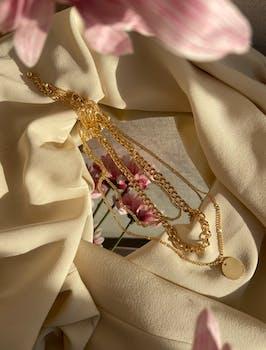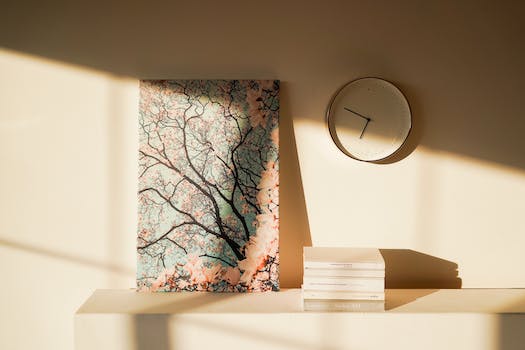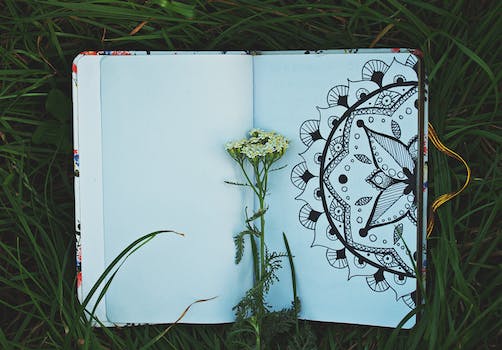

-
Table of Contents
Unleashing the Beauty of Material Fusion in Jewelry.
Introduction
Introduction:
Exploring the fusion and interplay of materials in jewelry is an exciting and innovative approach that pushes the boundaries of traditional design. By combining different materials, such as metals, gemstones, wood, glass, and even unconventional elements like plastics or textiles, jewelry designers can create unique and captivating pieces that showcase the harmonious interplay between various materials. This exploration allows for the creation of jewelry that not only enhances the beauty of the materials used but also tells a story, evokes emotions, and reflects the wearer's individuality. In this article, we will delve into the fascinating world of material fusion in jewelry, exploring the techniques, inspirations, and possibilities that arise from this creative process.
The Evolution of Materials in Jewelry Design
The art of jewelry making has a rich history that spans thousands of years. From ancient civilizations to modern times, jewelry has been a symbol of wealth, status, and personal expression. Throughout this history, one constant has remained: the use of materials to create these exquisite pieces. The evolution of materials in jewelry design is a fascinating journey that showcases the fusion and interplay of various elements.
In ancient times, jewelry was crafted using natural materials such as shells, bones, and stones. These materials were readily available and easily manipulated into wearable adornments. As civilizations advanced, so did the materials used in jewelry making. Metals such as gold, silver, and bronze became popular choices due to their durability and malleability. These metals allowed artisans to create intricate designs and elaborate patterns that were highly sought after.
The Renaissance period saw a resurgence in the use of gemstones in jewelry design. Diamonds, rubies, emeralds, and sapphires became prized possessions, adorning the crowns and necklaces of royalty. The discovery of new trade routes brought exotic gemstones from far-off lands, further expanding the possibilities for jewelry design. The interplay between metals and gemstones became a hallmark of this era, with intricate settings and delicate filigree work becoming the norm.
As the industrial revolution took hold, new materials such as glass, enamel, and plastics entered the world of jewelry making. These materials allowed for mass production and affordability, making jewelry accessible to a wider audience. However, the use of these materials also led to a decline in craftsmanship and the loss of traditional techniques.
In recent years, there has been a resurgence in the appreciation for handmade, artisanal jewelry. Designers are once again exploring the fusion of materials to create unique and one-of-a-kind pieces. The interplay between traditional materials such as gold and silver with unconventional elements like wood, leather, and even recycled materials has become a hallmark of contemporary jewelry design.
The fusion of materials in jewelry design allows for endless possibilities. The juxtaposition of contrasting textures and colors creates visual interest and adds depth to a piece. For example, combining the smoothness of metal with the roughness of a natural stone can create a striking contrast that draws the eye. Similarly, the combination of different metals, such as gold and silver, can create a sense of balance and harmony.
Transitional phrases such as "in recent years" and "similarly" help guide the reader through the article, ensuring a smooth flow of ideas. These phrases also help to connect the different sections of the article, allowing for a cohesive narrative.
In conclusion, the evolution of materials in jewelry design is a testament to the creativity and ingenuity of artisans throughout history. From the use of natural materials in ancient times to the fusion of traditional and unconventional elements in contemporary design, the interplay of materials has always been at the heart of jewelry making. The exploration of different materials allows for endless possibilities and creates unique and captivating pieces that are cherished for generations. Whether it is the combination of metals and gemstones or the fusion of contrasting textures, the fusion and interplay of materials in jewelry design continue to captivate and inspire.
Exploring the Aesthetic Possibilities of Mixed Materials in Jewelry

Exploring the Fusion and Interplay of Materials in Jewelry
Jewelry has always been a means of self-expression and adornment, with various materials being used to create unique and beautiful pieces. In recent years, there has been a growing trend in the use of mixed materials in jewelry, where different materials are combined to create stunning and innovative designs. This article will explore the aesthetic possibilities of mixed materials in jewelry, highlighting the ways in which the fusion and interplay of materials can elevate the overall design.
One of the key advantages of using mixed materials in jewelry is the ability to create contrast and texture. By combining materials such as metal, wood, glass, and gemstones, designers can achieve a visually striking piece that captures the attention of the viewer. For example, a necklace that combines a delicate silver chain with a bold wooden pendant creates a juxtaposition of textures that adds depth and interest to the overall design. This interplay of materials not only enhances the aesthetic appeal but also creates a tactile experience for the wearer.
Furthermore, the use of mixed materials allows for endless creative possibilities. Designers are no longer limited to using a single material to create their jewelry pieces. Instead, they can experiment with different combinations and explore the unique properties of each material. For instance, a bracelet that combines leather and metal can create a rugged yet sophisticated look, while a pair of earrings that combines pearls and crystals can exude elegance and glamour. The fusion of materials opens up a world of design opportunities, enabling designers to push the boundaries of traditional jewelry-making.
Mixed materials in jewelry also offer a way to incorporate sustainability and eco-consciousness into the design process. With the increasing demand for ethically sourced and environmentally friendly products, many designers are turning to recycled and upcycled materials to create their jewelry pieces. By repurposing materials such as old coins, vintage buttons, or discarded glass, designers can create unique and one-of-a-kind pieces that not only look beautiful but also have a positive impact on the environment. This trend towards sustainable jewelry reflects a growing awareness of the need to reduce waste and promote responsible consumption.
In addition to the aesthetic possibilities, the fusion of materials in jewelry also allows for the creation of pieces that hold symbolic meaning. Different materials can be used to represent different concepts or emotions, adding a deeper layer of significance to the jewelry. For example, a necklace that combines silver and turquoise can symbolize protection and healing, while a ring that combines gold and diamonds can represent love and commitment. The interplay of materials in these pieces creates a narrative that resonates with the wearer, making the jewelry not just a fashion accessory but a personal statement.
In conclusion, the fusion and interplay of materials in jewelry offer a myriad of aesthetic possibilities. By combining different materials, designers can create pieces that are visually striking, textured, and unique. The use of mixed materials also allows for endless creative opportunities, enabling designers to push the boundaries of traditional jewelry-making. Moreover, the incorporation of sustainable and recycled materials reflects a growing awareness of the need for eco-consciousness in the design process. Finally, the fusion of materials in jewelry can also hold symbolic meaning, adding a deeper layer of significance to the pieces. Overall, the exploration of mixed materials in jewelry opens up a world of possibilities, allowing for the creation of truly exceptional and meaningful pieces.
The Significance of Material Combinations in Contemporary Jewelry Design
The world of jewelry design is a fascinating realm where creativity and craftsmanship come together to create stunning pieces of wearable art. One aspect that plays a crucial role in the creation of these masterpieces is the choice of materials. In contemporary jewelry design, there is a growing trend towards the fusion and interplay of different materials, resulting in unique and visually captivating pieces.
The significance of material combinations in contemporary jewelry design cannot be overstated. By combining different materials, designers are able to create pieces that are not only visually striking but also possess a deeper meaning. The choice of materials can convey a message or tell a story, adding an extra layer of depth to the jewelry.
One of the reasons why material combinations are so significant in contemporary jewelry design is the ability to create contrast and balance. By juxtaposing materials with different textures, colors, and properties, designers can create a harmonious interplay that adds visual interest to the piece. For example, combining smooth, polished metals with rough, natural gemstones can create a beautiful contrast that draws the eye and adds a dynamic element to the jewelry.
Another reason why material combinations are important in contemporary jewelry design is the ability to create pieces that are versatile and adaptable. By using different materials, designers can create jewelry that can be worn in various settings and with different outfits. For example, a necklace that combines gold and silver can be worn with both formal and casual attire, making it a versatile accessory that can be enjoyed in different contexts.
Furthermore, material combinations in contemporary jewelry design allow for the exploration of new techniques and possibilities. By combining materials with different properties, designers can push the boundaries of traditional jewelry-making techniques and create innovative and unconventional pieces. For example, combining metal with unconventional materials such as wood or fabric can result in unique and unexpected designs that challenge traditional notions of what jewelry should be.
In addition to the aesthetic and technical aspects, material combinations in contemporary jewelry design also have a symbolic significance. Certain materials carry cultural or historical connotations, and by combining them, designers can create pieces that evoke a sense of heritage or tradition. For example, combining pearls with gold can create a piece that symbolizes elegance and sophistication, while combining leather with silver can create a piece that represents rebellion and individuality.
In conclusion, the fusion and interplay of materials in contemporary jewelry design are of great significance. Material combinations allow designers to create visually striking pieces that possess a deeper meaning. They enable the creation of contrast and balance, versatility and adaptability, as well as the exploration of new techniques and possibilities. Moreover, material combinations in contemporary jewelry design can carry symbolic significance, adding an extra layer of depth to the pieces. As the world of jewelry design continues to evolve, the significance of material combinations will undoubtedly continue to play a central role in the creation of unique and captivating pieces of wearable art.
Q&A
1. How does exploring the fusion and interplay of materials enhance jewelry design?
Exploring the fusion and interplay of materials in jewelry enhances design by creating unique and visually appealing combinations that can add depth, texture, and contrast to the piece.
2. What are some examples of materials that can be fused and interplayed in jewelry?
Examples of materials that can be fused and interplayed in jewelry include metals (such as gold, silver, and copper), gemstones, glass, wood, ceramics, and various types of beads.
3. What are the benefits of using a variety of materials in jewelry design?
Using a variety of materials in jewelry design allows for greater creativity and versatility. It can result in more interesting and dynamic pieces that cater to different tastes and styles. Additionally, combining different materials can also offer durability, flexibility, and unique aesthetic qualities to the jewelry.
Conclusion
In conclusion, exploring the fusion and interplay of materials in jewelry offers endless possibilities for creativity and innovation. By combining different materials such as metals, gemstones, glass, wood, and even unconventional elements, jewelry designers can create unique and captivating pieces that push the boundaries of traditional craftsmanship. This fusion allows for the creation of jewelry that not only showcases the beauty of individual materials but also highlights the harmonious interplay between them. The exploration of materials in jewelry opens up new avenues for self-expression and allows wearers to make a bold statement with their personal style.












